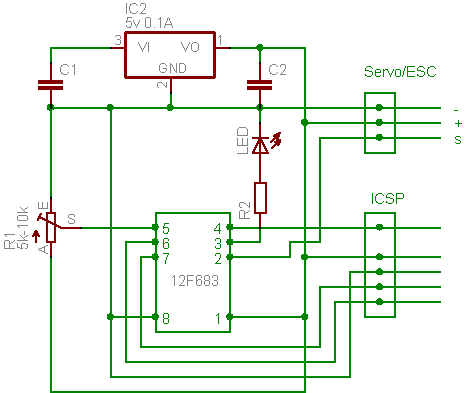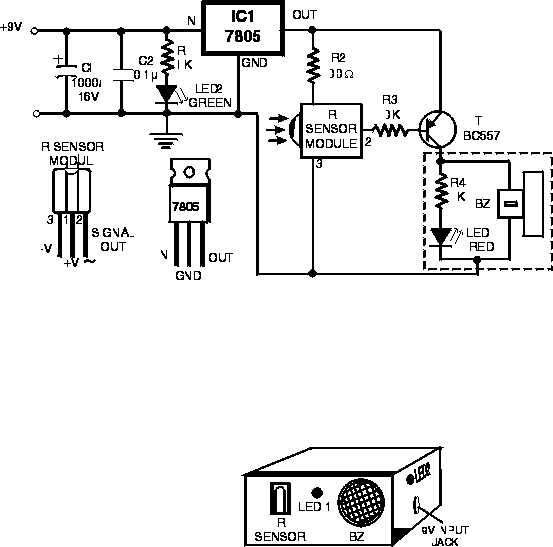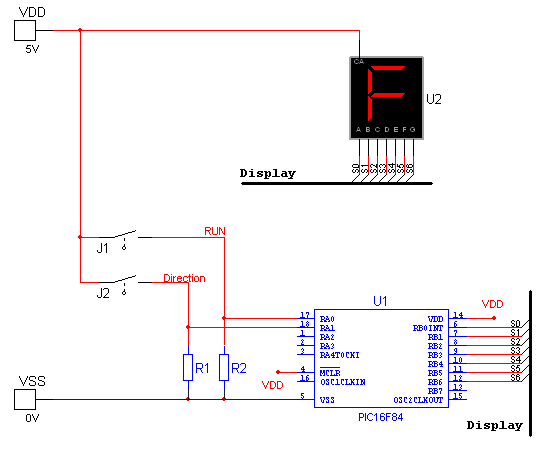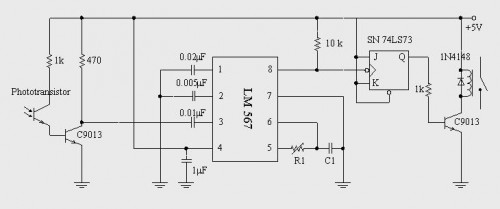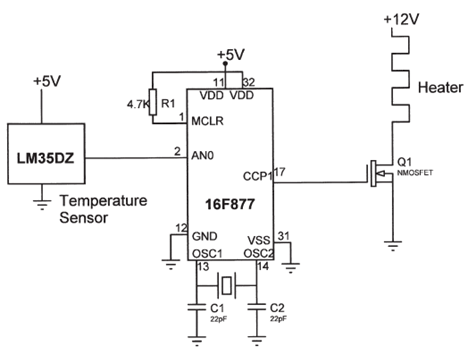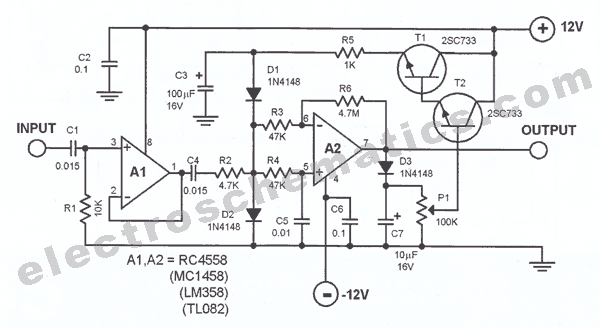
RF Remote Control With HT12E IC
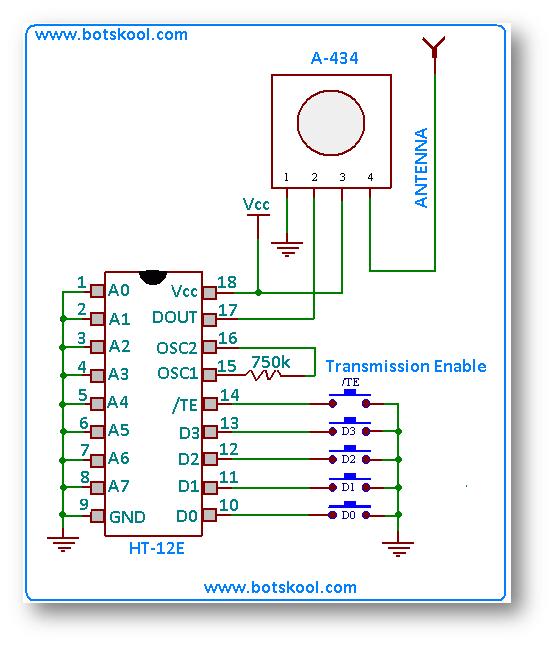
The following circuit illustrates an RF Remote Control Circuit Diagram. This circuit is based on the HT12E IC. Features include the original data in parallel format, where the decoder IC receives the signal through the RF receiver module, utilizing an ASK (Amplitude Shift Keying) based Tx/Rx (transmitter/receiver) pair operating at 433 MHz, along with an RF transmitter module. Components include IC, switch, and motor.
The RF Remote Control Circuit employs the HT12E integrated circuit, which functions as a decoder for the incoming signals. The circuit operates within the 433 MHz frequency band, utilizing Amplitude Shift Keying (ASK) modulation for effective communication between the transmitter and receiver modules. The transmitter module sends encoded data, which is received by the RF receiver module connected to the HT12E.
The HT12E IC is designed to handle parallel data input, making it suitable for applications requiring multiple control signals. Upon receiving the RF signal, the HT12E decodes the data and outputs it in parallel format. This allows for straightforward interfacing with other components such as motors or switches, enabling control of various devices remotely.
The circuit typically includes an RF transmitter module that transmits the data signals, while the RF receiver module captures these signals and forwards them to the HT12E. The components involved in the circuit, such as the switch and motor, can be activated or controlled based on the decoded signals from the HT12E. This setup is ideal for remote control applications, where users can operate devices from a distance with minimal complexity.
Overall, the RF Remote Control Circuit utilizing the HT12E IC exemplifies a practical implementation of RF communication technology, facilitating efficient control of electronic devices through wireless transmission.The following circuit shows a RF Remote Control Circuit Diagram. This circuit based on the HT12E IC. Features: original data in the parallel format, decoder IC receives the signal via the RF receiver module, using ASK (Amplitude Shift Keying) based Tx/Rx (transmitter/receiver) pair operating at 433 MHz, RF transmitter module. Componen t: IC, Switch, Motor. [botskool. com] 🔗 External reference
The RF Remote Control Circuit employs the HT12E integrated circuit, which functions as a decoder for the incoming signals. The circuit operates within the 433 MHz frequency band, utilizing Amplitude Shift Keying (ASK) modulation for effective communication between the transmitter and receiver modules. The transmitter module sends encoded data, which is received by the RF receiver module connected to the HT12E.
The HT12E IC is designed to handle parallel data input, making it suitable for applications requiring multiple control signals. Upon receiving the RF signal, the HT12E decodes the data and outputs it in parallel format. This allows for straightforward interfacing with other components such as motors or switches, enabling control of various devices remotely.
The circuit typically includes an RF transmitter module that transmits the data signals, while the RF receiver module captures these signals and forwards them to the HT12E. The components involved in the circuit, such as the switch and motor, can be activated or controlled based on the decoded signals from the HT12E. This setup is ideal for remote control applications, where users can operate devices from a distance with minimal complexity.
Overall, the RF Remote Control Circuit utilizing the HT12E IC exemplifies a practical implementation of RF communication technology, facilitating efficient control of electronic devices through wireless transmission.The following circuit shows a RF Remote Control Circuit Diagram. This circuit based on the HT12E IC. Features: original data in the parallel format, decoder IC receives the signal via the RF receiver module, using ASK (Amplitude Shift Keying) based Tx/Rx (transmitter/receiver) pair operating at 433 MHz, RF transmitter module. Componen t: IC, Switch, Motor. [botskool. com] 🔗 External reference
